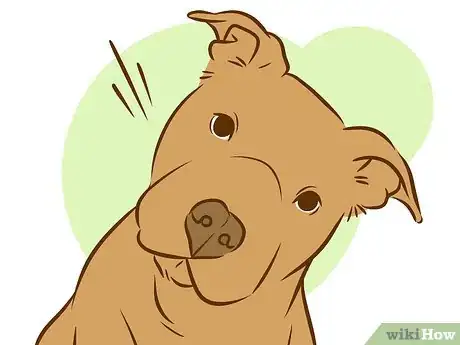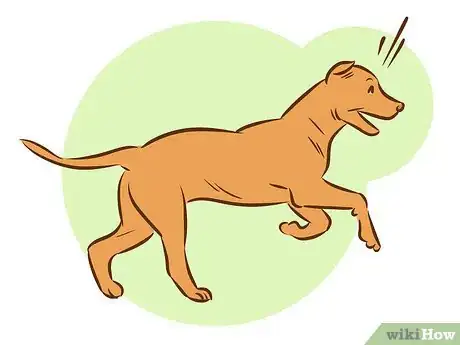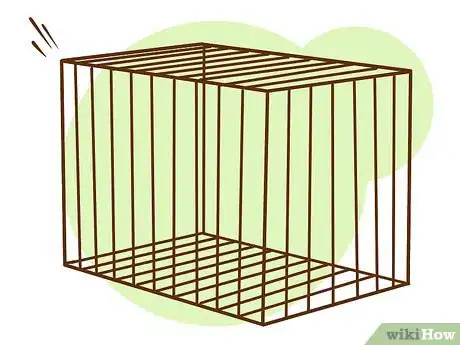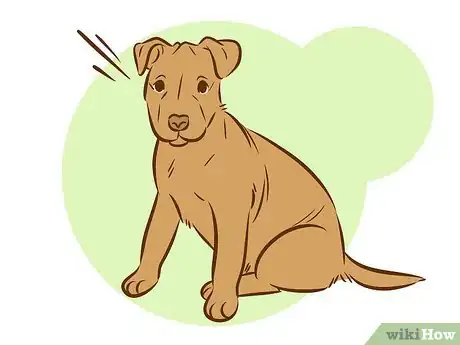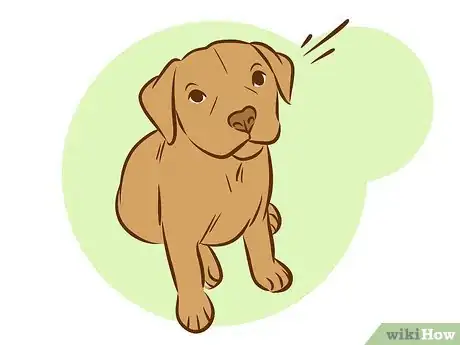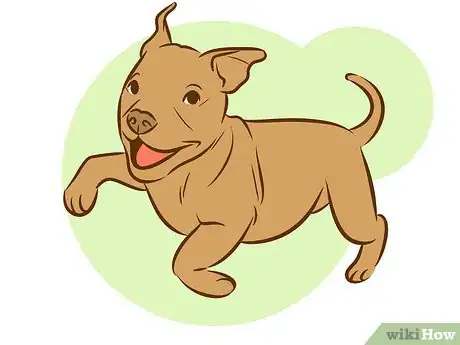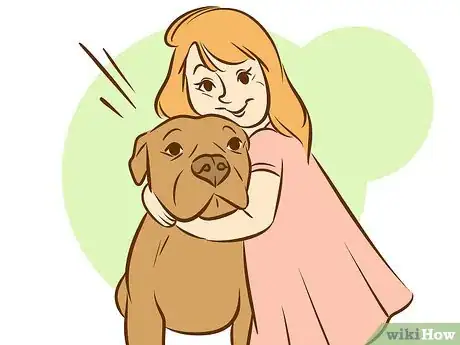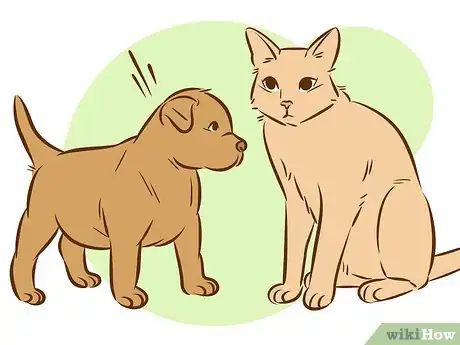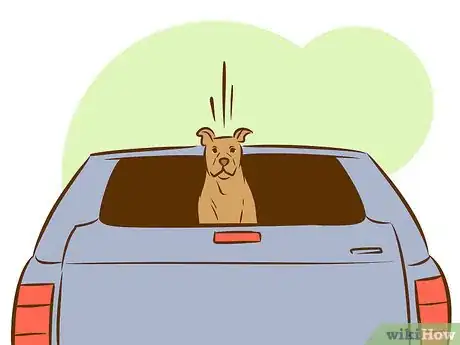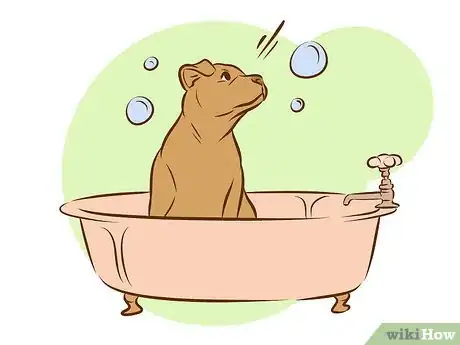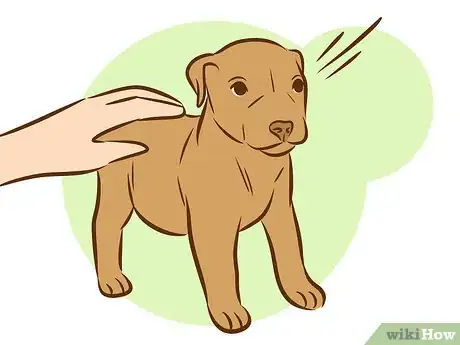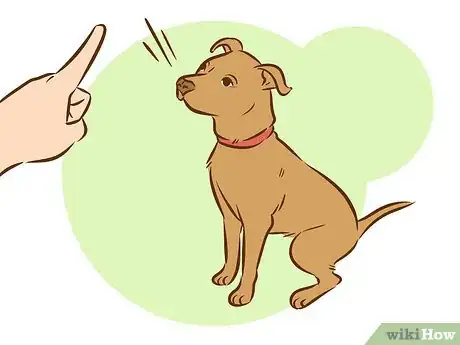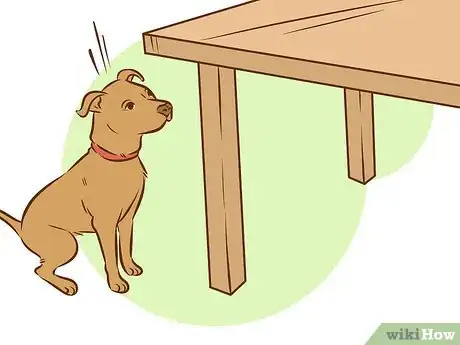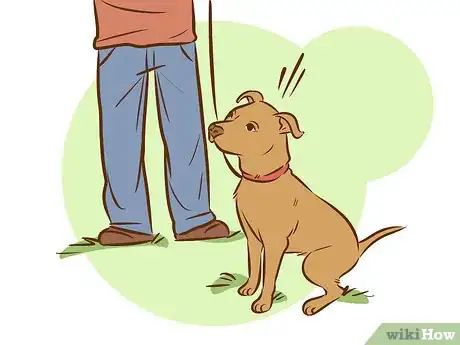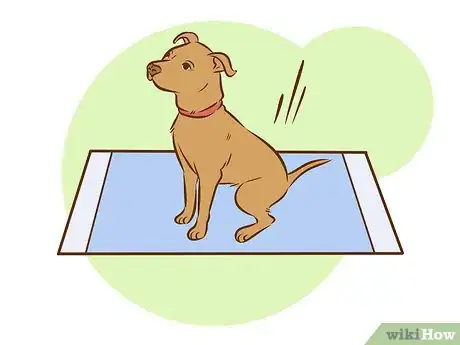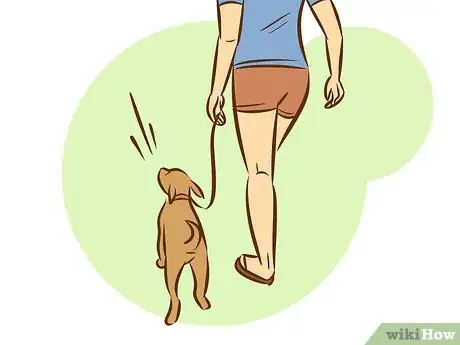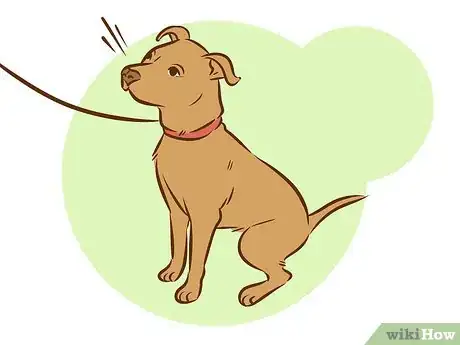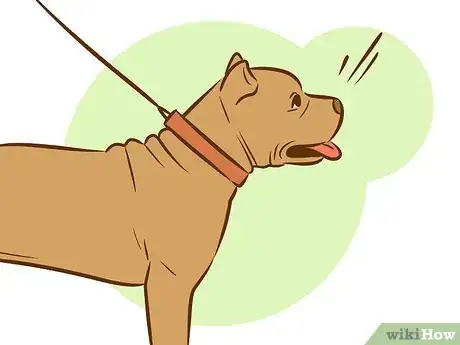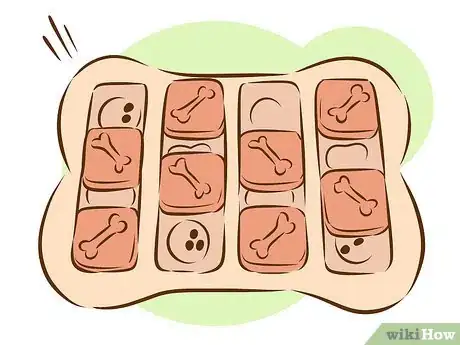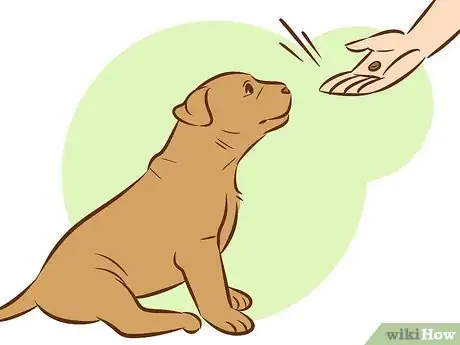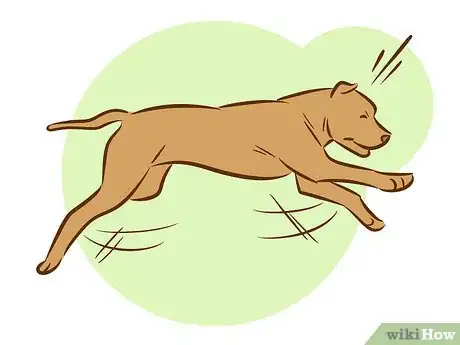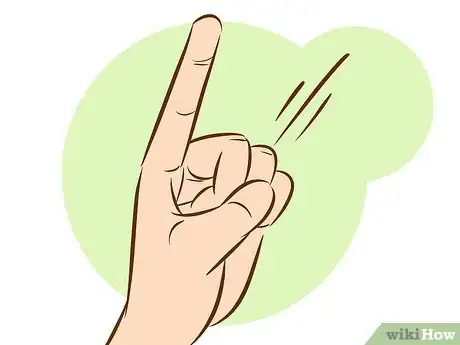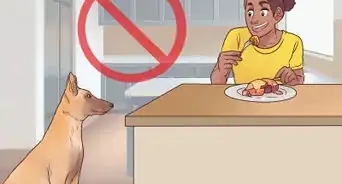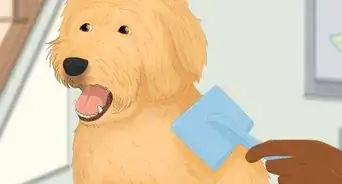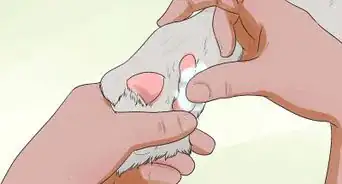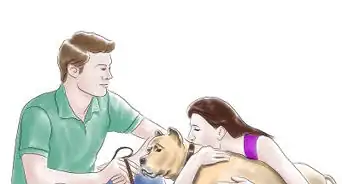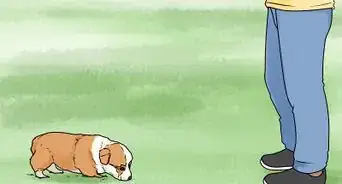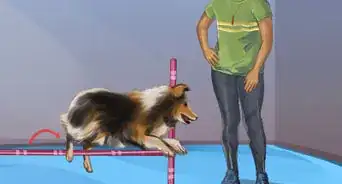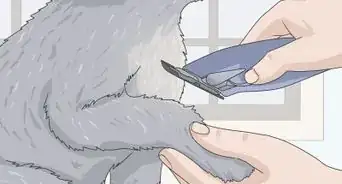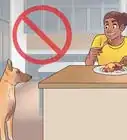This article was co-authored by David Levin. David Levin is the Owner of Citizen Hound, a professional dog walking business based in the San Francisco Bay Area. With over 9 years of professional dog walking and training experience, David's business has been voted the "Best Dog Walker SF" by Beast of the Bay for 2019, 2018, and 2017. Citizen Hound has also been ranked #1 Dog Walker by the SF Examiner and A-List in 2017, 2016, 2015. Citizen Hound prides themselves on their customer service, care, skill, and reputation.
wikiHow marks an article as reader-approved once it receives enough positive feedback. In this case, 84% of readers who voted found the article helpful, earning it our reader-approved status.
This article has been viewed 182,314 times.
A “pit bull” is a general term for the American Pit Bull Terrier or the American Staffordshire Terrier. These breeds of dog are stocky, strong, athletic and smart. However, poor training and breeding can lead to a lack of sociability, aggressiveness and fighting with other animals. With discipline and care, you can train a pitbull puppy to ensure it is a gentle companion and family pet.
Steps
Preparing for a Pit Bull
-
1Know your breeder. Pit bulls can have wonderful temperaments if they are bred for this quality and not for fighting.
- If the breeder tells you they train guard dogs, you may want to choose a breeder who breeds for family pets.
- Find out if the breeder has a reputation for selling dogs with hip dysplasia or cataracts—2 common afflictions in pit bulls.[1] Calling previous owners, reading reviews on the Internet and talking to your local animal shelters is important due diligence.
-
2Keep other cats and dogs in your home. If you want your dog to socialize with animals as well as people, you should raise the puppy with those animals from the beginning.
- If you separate other animals from the puppy, the dog may identify all other animals as prey and respond aggressively.
Advertisement -
3Buy chew toys before you bring the puppy home. Your dog will go through teething, playing, socializing and a lot of learning in the first few months of ownership.
- Toys, both soft and hard allow the dog to bite inanimate objects when teeth are growing.
- Failure to keep the toys stocked may result in biting behavior.
-
4Don’t bring a pit bull into an inactive home. Pit bulls require more exercise and play than many other breeds of dogs.
- Failure to exercise dogs may make them bored, destructive and aggressive.
-
5Buy a crate for your pit bull. A crate will make it easier to potty train your pit bull and help it feel at home in your house.
- The crate can also be used for transportation.
- If your dog is will travel frequently, you may want to use absorbent pads inside his crate. You can teach him to use the pads if he cannot go outside.
- When your dog is trained to use his crate, you can travel with him much more easily.
Starting Puppy Socialization
-
1Arrange to get your puppy at 8 weeks from birth. The first 16 weeks of the puppy’s life are the socialization period that determines much about what they learn about other animals and the outside world.
- The first step in socialization is ensuring the puppy has adequate time with his mother. Ask your breeder if the mom had time to care for the puppy and discipline it.
- The second step is socialization with littermates. Siblings teach each other about submission and dominance.
- The third step in socialization is the breeder. This person is the first contact with humans. A gentle touch, good discipline and basic housebreaking will go a long way.
- The fourth step is you as the owner. The socialization process between 7 and 16 weeks is even more important for pit bulls than other breeds of dog.
-
2Wait 2 weeks to start the majority of puppy socialization. Allow the puppy to become comfortable in your home. [2]
- You can start teaching the puppy basic commands, like “stay” and “sit” and where to pee.
- Pet your puppy frequently. Encourage everyone in the family and your friends to pet the puppy on the head, back and stomach.
-
3Allow the puppy to start exploring your home as soon as it becomes curious. You will need to watch the puppy closely during housebreaking, but try to avoid keeping certain areas of the house off limits.
- It’s better to allow your puppy to get used to different environments than to restrict him at this age.
-
4Encourage friends and family to visit the puppy regularly between 8 and 12 weeks old. The more people who are introduced to him the better.
- He will learn to view humans as non-threatening animals.
-
5Introduce the puppy to other dogs and animals when he is between 10 and 16 weeks old.
- If possible, make these socialization periods in small parks or homes rather than in dog parks. Dog parks can be intimidating for small animals.
-
6Take your dog on frequent trips outside the home. In fact, the more diverse the experiences between 10 and 16 weeks old, the better.
- Introduce the dog to the car, elevators, offices (where allowed), other homes, and parks.
- As long as your dog is safe, the more experiences he has, the more adaptable he will be in the future.
- Watch your dog carefully for parvovirus. Make sure the dog is vaccinated and that it does not spend a lot of time sitting or laying down in unsanitary conditions.
-
7Groom your dog. Brush him and bathe him regularly.
- Pit bulls only need to be bathed every month or so, so make sure the first few baths are within the socialization period or they may not learn to stay still during bath time.
Teaching Dominance
-
1Be dominant with your pet. This does not mean you should yell or hurt the dog, but rather show him that you are the boss of the relationship. Make sure other members of your family learn to be dominant as well.
-
2Hold the puppy on its back with a light touch, if he becomes aggressive. In packs, the submissive animal displays their belly to the dominant animal.
- Repeat this each time the puppy is too aggressive or tries to be dominant with you.
- When the puppy starts to show this behavior on his own, you know you are on the right track.
-
3Use a firm voice when showing displeasure. Don’t yell aggressively.
-
4Choose commands and stick to them. Try “Down,” “Off” and “Back” instead of a general “No.”
- Pit bulls are smart and can learn a lot of commands. Try to be specific with your training words.
-
5Make boundaries for your dog. Make sure your entire family understands that the dog should stay off tables and furniture.
- Practice with friends and family so your pit bull understands the boundaries and who is boss.
Housebreaking
-
1Take your pit bull outside very frequently to pee.
-
2Set up an area, whether large or small, where the pit bull should go every time.
- If the dog must learn to pee inside, use special disposable training pads. Absorbent pads set in the same place each time is a good “last resort” for the dog if you cannot get home in time to take him outside.
-
3Take your dog on frequent walks. Establish boundaries for where the dog can pee, such as on grass.EXPERT TIPDavid Levin is the Owner of Citizen Hound, a professional dog walking business based in the San Francisco Bay Area. With over 9 years of professional dog walking and training experience, David's business has been voted the "Best Dog Walker SF" by Beast of the Bay for 2019, 2018, and 2017. Citizen Hound has also been ranked #1 Dog Walker by the SF Examiner and A-List in 2017, 2016, 2015. Citizen Hound prides themselves on their customer service, care, skill, and reputation.Professional Dog Trainer

 David Levin
David Levin
Professional Dog TrainerTeach your puppy to walk off-leash while it's very young. During the first few weeks, your puppy will be naturally inclined to follow you everywhere, even without a leash. Also, since its senses haven't fully developed, the puppy won't notice as many distractions while you're walking. Just make sure you're in a large, open area away from traffic. However, you can use a long lead if you want an extra layer of control.
-
4Pay attention to the dog. If they make a mess, communicate clearly and firmly without harsh punishment. Take the dog to the area in which he can pee.
Using a Leash
-
1Start using a leash between 8 and 16 weeks old. Use it regularly to avoid confusion.
-
2Keep the leash firmly pulled back so that the dog walks beside or behind you, not ahead of you.
-
3Use firm commands, such as “Back,” if the dog pulls or jumps.
- Pit bulls grow up to be extremely strong. It will be very difficult to control a leash-pulling pit bull at full strength, if you don’t teach them when they are young.
Using Toys and Games
-
1Give your pit bull various toys. If possible, find “puzzle toys” that encourage the dog to solve a puzzle to get a treat. [3]
-
2Use treats for tricks. Try to teach your puppy a new trick each week. Reward the puppy with treats to encourage repeat behavior.
- Limit the training period to approximately 5 minutes at a time each day. Focused training time will work better than infrequent long periods of training.
-
3Allow your puppy to run without leash. Free exercise compliments mental exercise.
- Find a yard or a fenced park.
- Avoid no-leash dog parks until your dog is older than 16 weeks old.
-
4Establish rules during playtime. Do not teach your dog to chew on you during play.
- Some experts recommend yelping if you receive a bite and stopping playtime abruptly. The dog will learn that biting stops playtime.
- Wait 10 to 20 minutes before resuming playtime.
- Redirect biting with toys before your dog tries nipping at you. If you see your dog is biting, it could be teething and need a toy to help break in new teeth. [4]
Community Q&A
-
QuestionHow do I train my pitbull to go into a crate and not cry?
 Community AnswerTry working your way up. First put your dog in the crate and stay in the room with him for five minutes. Give him treats and praise. Then, do it again, but with short breaks of no attention in between praise and treats for another 5 minutes. Then do it for 10 minutes with you still in the room. When you get up to a solid 30 minutes with you not giving him any attention but staying in the room, leave the room for 5 minutes. If he doesn't cry, reward him immediately. Then work your way up. You can put a blanket over his crate, play soft music or turn on the TV, or give him a bone (one that he can't choke on or swallow) to chew on while you're gone. Be patient.
Community AnswerTry working your way up. First put your dog in the crate and stay in the room with him for five minutes. Give him treats and praise. Then, do it again, but with short breaks of no attention in between praise and treats for another 5 minutes. Then do it for 10 minutes with you still in the room. When you get up to a solid 30 minutes with you not giving him any attention but staying in the room, leave the room for 5 minutes. If he doesn't cry, reward him immediately. Then work your way up. You can put a blanket over his crate, play soft music or turn on the TV, or give him a bone (one that he can't choke on or swallow) to chew on while you're gone. Be patient. -
QuestionWhat kind of toys do I need to get my girl Pitbull puppy?
 Community AnswerMale and female puppies are not very different in this respect. Chew toys are essential for all puppies, as they need oral stimulation to help their milk (baby) teeth come out. Since Pitbulls have strong jaws, expensive or easily breakable toys are not suggested until you are sure you have a gentle/careful dog. An open space to run around in will be great for the puppy's entertainment. Remember that you will be your puppy's favorite "toy," so just a few toys should be enough. Make sure that most are toys you can use to interact with your dog, like rope for tug-of-war, or balls.
Community AnswerMale and female puppies are not very different in this respect. Chew toys are essential for all puppies, as they need oral stimulation to help their milk (baby) teeth come out. Since Pitbulls have strong jaws, expensive or easily breakable toys are not suggested until you are sure you have a gentle/careful dog. An open space to run around in will be great for the puppy's entertainment. Remember that you will be your puppy's favorite "toy," so just a few toys should be enough. Make sure that most are toys you can use to interact with your dog, like rope for tug-of-war, or balls. -
QuestionIs it necessary for male dogs to mate?
 Community AnswerNo. Not neutering can add to the animal population, which can result in overfilled shelters and euthanasia.
Community AnswerNo. Not neutering can add to the animal population, which can result in overfilled shelters and euthanasia.
Things You'll Need
- Crate (closed non wire crate)
- Balls
- Squeaky toys
- Pull ropes
- Stuffed animal without hard eyes or nose for sleeping at night
- Leash
- Dog shampoo
- Towel
- Collar
- Dog tags with a name and address or phone number
- Microchip
- Puzzle games or a Kong toy
- Treats
- Housebreaking pads
- Baby gate with small spaces between
- Nontoxic urine cleaner
- Disposable gloves
- Reliable Veterinarian
- Groomer
- Dog trainer
- Other animals for socialization
- Nontoxic urine scent remover
References
About This Article
To train a pit bull puppy, make sure it gets plenty of positive human interaction between 8 and 12 weeks old, then introduce the pup to other dogs and animals between 10 and 16 weeks old to complete socialization, which is an important part of pit bull training. Start using a leash between 8 and 16 weeks old and teach your dog simple commands like "Back!" and "Stay." Remember to consistently use the same commands and shower your pup with verbal praise when it learns new things! For tips on housebreaking a pit bull puppy, read on!
